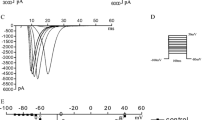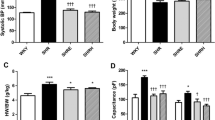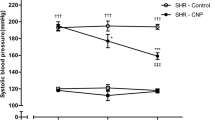Abstract
The study's objective was to ascertain the results of sub-chronic therapy of various diuretics on the ischemia/reperfusion dysfunction of the heart in hypertensive rats by a global ischemia in an isolated rat heart model. The research included 40 spontaneously hypertensive male rats (Wistar Kyoto strain, body mass 250 ± 30 g, 8 weeks old) grouped into four groups. The animals were treated for 4 weeks with 10 mg/kg of hydrochlorothiazide, indapamide, or spironolactone per os. After a period of sub-chronic treatment, we analyzed hemodynamic measurements, echocardiography, and myocardial function according to the Langendorff retrograde perfusion method. The hearts were subjected to 20 min of global ischemia and then reperfused for 30 min (I20:R30). Cardiovascular parameters that depict the left ventricle functions were continuously monitored, while flowmetry was used to determine coronary flow values. Markers of oxidative stress were estimated from coronary venous effluent using spectrophotometry. All three examined diuretics (hydrochlorothiazide, spironolactone, indapamide) lowered the production of the majority of the detected prooxidants, reducing myocardial oxidative damage. The cardiological examination of heart function in vivo demonstrated that treatment with indapamide and spironolactone mitigates left ventricular hypertrophy but without significant lowering of blood pressure or increment in ejection fraction. Additionally, monitoring of cardiac function ex vivo indicated the cardiodepressant effect of spironolactone in spontaneously hypertensive rats.


Similar content being viewed by others
Data availability
Data are available from the corresponding author upon reasonable request.
Code availability
NA.
References
Domenic S (2015) Mineralocorticoid receptor antagonists for treatment of hypertension and heart failure. Methodist Debakey Cardiovasc J 11:235–239
Grombein M, Hu Q, Rau S, Zimmer C, Hartmann W (2015) Heteroatom insertion into 3,4-dihydro1H-quinolin-2-ones leads to potent and selective inhibitors of human and rat aldosterone synthase. Eur J Med Chem 90:788–796
Kolkhof P, Jaisser F, Kim S, Filippatos G, Nowack C, Pitt B (2016) Steroidal and novel nonsteroidal mineralocorticoid receptor antagonists in heart failure and cardiorenal diseases: comparison at bench and bedside. In: Bauersachs J, Butler J, Sandner P (eds) Handb Exp Pharmacol. Springer, Cham, pp 271–305
Weldon S, Brown N (2019) Inhibitors of aldosterone synthase. Vitam Horm 109:211–219
Namsolleck P, Unger T (2014) Aldosterone synthase inhibitors in cardiovascular and renal diseases. Nephrol Dial Transplant 28(1):i62–i68
Funder JW (2005) RALES, EPHESUS and redox. J Steroid Biochem Mol Biol 93:121–125
Roush GC, Kaur R, Ernst ME (2014) Diuretics: a review and update. J Cardiovasc Pharmacol Ther 19:5–13
Li W, Wu N, Shu W, Jia D, Jia P (2015) Pharmacological preconditioning and postconditioning with nicorandil attenuate ischemia/reperfusion-induced myocardial necrosis and apoptosis in hypercholesterolemic rats. ExpTher Med 10:2197–2205
OldeEngberink RH, Frenkel WJ, van den Bogaard B, Brewster LM, Vogt L, van den Born BJ (2015) Effects of thiazide-type and thiazide-like diuretics on cardiovascular events and mortality: systematic review and meta-analysis. Hypertension 65:1033–1040
Roush GC, Ernst ME, Kostis JB, Tandon S, Sica DA (2015) Head-to-head comparisons of hydrochlorothiazide with indapamide and chlorthalidone: antihypertensive and metabolic effects. Hypertension 65:1041–1106
Fagard RH, Celis H, Thijs L, Wouters S (2009) Regression of left ventricular mass with antihypertensive treatment: a meta-analysis of randomized comparative studies. Hypertension 54:1084–1091
Samaha MM, Helal MG, El-Sherbiny M, Said E, Salem HA (2022) Indapamide increases irs1 expression and modifies adiponectin/NLRP3/PPARγ crosstalk in type 2 diabetic rats. Antioxidants (Basel) 11:691
Mayyas F, Alzoubi KH, Bonyan R (2017) The role of spironolactone on myocardial oxidative stress in rat model of streptozotocin-induced diabetes. Cardiovasc Ther. https://doi.org/10.1111/1755-5922.12242
Wang Y, Evangelista S, Liu Y, Zhang MS (2013) Beneficial effects of nebivolol and hydrochlorothiazide combination in spontaneously hypertensive rats. J Int Med Res 41:603–617
Chillon JM, Baumbach GL (2004) Effects of indapamide, a thiazide-like diuretic, on structure of cerebral arterioles in hypertensive rats. Hypertension 43:1092–1097
Milliez P, Gomes S, Champ-Rigot L, Callebert J, Samuel JL, Delcayre C (2012) Effects of spironolactone alone and in addition to a β-blocker on myocardial histological and electrical remodeling in chronic severe failing rat hearts. J Cardiovasc Pharmacol 60:315–321
Jeremic JN, Jakovljevic VL, Zivkovic VI, Srejovic IM, Bradic JV, Milosavljevic IM, Mitrovic SL, Jovicic NU, Bolevich SB, Svistunov AA, Tyagi SC, Jeremic NS (2020) Garlic derived diallyl trisulfide in experimental metabolic syndrome: metabolic effects and cardioprotective role. Int J Mol Sci 30(21):9100
Stypmann J, Engelen MA, Troatz C, Rothenburger M, Eckardt L, Tiemann K (2009) Echocardiographic assessment of global left ventricular function in mice. Lab Anim 43:127–137
Ohkawa H, Ohishi N, Yagi K (1979) Assay for lipid peroxides in animal tissues by the thiobarbituric acid reaction. Anal Biochem 95:351–358
Green LC, Wagner DA, Glogowski J, Skipper PL, Wishnok JS, Tannenbaum SR (1982) Analysis of nitrate, nitrite and [15 N] nitrate in biological fluids. Anal Biochem 126:131–138
Auclair C, Voisin E (1985) Nitroblue tetrazolium reduction. In: Greenvvald RA (ed) Handbook of methods for oxygen radical research. CRC Press, Boca Raton, pp 123–132
Pick E, Keisari Y (1980) A simple colorimetric method for the measurement of hydrogen peroxide produced by cells in culture. J Immunol Methods 38:161–170
Mølgaard S, Faricelli B, Salomonsson M, Engstrøm T, Treiman M (2016) Increased myocardial vulnerability to ischemia-reperfusion injury in the presence of left ventricular hypertrophy. J Hypertens 34:513–523
Pagliaro P, Penna C (2017) Hypertension, hypertrophy, and reperfusion injury. J Cardiovasc Med 18:131–135
Sato K, Dohi Y, Kojima M, Takase H, Suzuki S, Ito S (2010) Antioxidative effects of thiazide diuretics in refractory hypertensive patients. A randomized crossover trial of chlortalidone and trichlormethiazide. Arzneimittelforschung 60(10):612–616
Asil S, Atalar E (2017) Hipertansiyon tedavisinde kullanılan tüm diüretikler aynı değildir [all diuretics used in the treatment of hypertension are not the same]. Turk Kardiyol Dern Ars 45:94–101
Leren P, Helgeland A (1986) Oslo hypertension study. Drugs 31(Suppl. 1):41–45
DiNicolantonio JJ, Bhutani J, Lavie CJ, O’Keefe JH (2015) Evidence-based diuretics: focus on chlorthalidone and indapamide. Future Cardiol 11:203–217
Kuster GM, Kotlyar E, Rude MK, Siwik DA, Liao R, Colucci WS, Sam F (2005) Mineralocorticoid receptor inhibition ameliorates the transition to myocardial failure and decreases oxidative stress and inflammation in mice with chronic pressure overload. Circulation 111:420–427
MayyasSartório CL, Fraccarollo D, Galuppo P, Leutke M, Ertl G, Stefanon I, Bauersachs J (2007) Mineralocorticoid receptor blockade improves vasomotor dysfunction and vascular oxidative stress early after myocardial infarction. Hypertension 50:919–925
Mayyas F, Alzoubi KH, Bonyan R (2017) The role of spironolactone on myocardial oxidative stress in rat model of streptozotocin-induced diabetes. Cardiovasc Ther 35:e12242
Travers JG, Kamal FA, Robbins J, Yutzey KE, Blaxall BC (2016) Cardiac fibrosis: the fibroblast awakens. Circ Res 118:1021–1040
Buonafine M, Bonnard B, Jaisser F (2018) Mineralocorticoid receptor and cardiovascular disease. Am J Hypertens 31:1165–1174
Funding
This research was supported by the Junior Project number 11/22 from the Faculty of Medical Sciences, University of Kragujevac, Serbia.
Author information
Authors and Affiliations
Contributions
ND, TNT, and VZ contributed to conceptualization, writing and preparation of the original draft; MA, MS, and KR contributed to validation, visualization, and methodology. SB and SBB contributed to methodology and software. NZ contributed to data curation and visualization. MA, ND, and VLJ contributed to investigation, conceptualization, writing and preparation of the original draft, supervision, and writing, reviewing, and editing of the manuscript.
Corresponding author
Ethics declarations
Conflict of interest
The authors declare no conflict of interest.
Ethical approval
The study is approved by the Ethics Committee for Laboratory Animal Welfare of the Faculty of Medical Sciences, University of Kragujevac, Serbia.
Consent to participate
NA.
Consent for publication
NA.
Additional information
Publisher's Note
Springer Nature remains neutral with regard to jurisdictional claims in published maps and institutional affiliations.
Supplementary Information
Below is the link to the electronic supplementary material.
Rights and permissions
Springer Nature or its licensor (e.g. a society or other partner) holds exclusive rights to this article under a publishing agreement with the author(s) or other rightsholder(s); author self-archiving of the accepted manuscript version of this article is solely governed by the terms of such publishing agreement and applicable law.
About this article
Cite this article
Dragasevic, N., Savic, M., Mihajlovic, K. et al. The impact of different diuretics on regression of myocardial reperfusion injury in spontaneously hypertensive rats. Mol Cell Biochem 478, 1803–1812 (2023). https://doi.org/10.1007/s11010-022-04622-x
Received:
Accepted:
Published:
Issue Date:
DOI: https://doi.org/10.1007/s11010-022-04622-x




